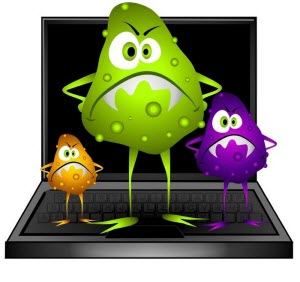Working with your computer all day long, you just cannot avoid malware and internet junk which will slow down your PC and even threat your internet security or make your PC unable to work. Obviously, you need to scan the computer and remove the malware. Here's a methodical approach that you can use to determine what the problem is, how to scan for malware and virus, and what to do to protect PC from future invasions.
How to Tell if Your PC is Infected with Virus/Malware
 " />
" />Is the PC really infected? To find answer to this question we should first determine whether you're dealing virus or a problem with hardware, software, or user error. Below are some signs that your computer is virus infected.
Computer seems to run much more slowly than it used to? This could be the result of malware as the malicious code begins to drain your computer's processing resources. If you aren't running a resource-heavy application but your computer is very slow, you might have a computer virus.
Strange messages indicating that you can't access certain drives on your computer are another sign that something is wrong. In a similar vein, applications that won't run or files that won't open may also be the result of infection. Other indicators include hardware (like printers) that no longer respond to commands.
If you notice that file sizes are fluctuating even if you aren't accessing those files, that's another sign of a computer virus. And finally, if you access menus and their appearance is odd or distorted, you could be the victim of a malware attack.
How to Remove Malware from Computer
Most of the antimalware scanners include tools for removing the problem program once it has been detected. Microsoft has its own Malicious Software Removal Tool, which is updated to detect new malware every month on Patch Tuesday, checking for and removing specific malware on the machine.
You can also use the command prompt to clean up an infected computer. It can be found in the Start menu among the "Programs" under "Accessories." Then try to locate the virus file. If you think you got infected from an e-mail, you can find it in the e-mail attachments folder. Often a virus will show up in the system folder or temporary folder. You can remove the permissions with this command "attrib -r -a -s -h VIRUSNAMEHERE.vbs. To remove it from the system type "del VIRUSNAMEHERE.vbs.
If all fails, take your PC to a professional repair shop to get tech help.
How to Protect PC from Future Invasions
Use antivirus, antispyware, and firewall software and keep it all up to date. Of course, no software could guarantee you safe from malware. You'd better keep these tips in mind when surfing the internet.
- 1) Make a backup of your computer by using Windows Boot Genius.
- 2) Avoid clicking on unsolicited Web links and opening dubious attachments.
- 3) Verify e-mail addresses and Web links by typing the main URL into a browser, particularly for sensitive sites like PayPal.
- 4) Avoid inadvertently downloading malware on sites by not clicking "agree," "OK" or "I accept" in banner ads or pop-up windows.
- 5) Press "CTRL + F4" on your keyboard and if that doesn't close the window, press "ALT + F4" to close the browser.